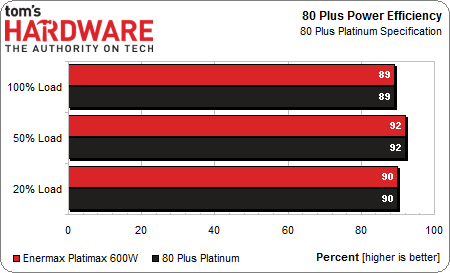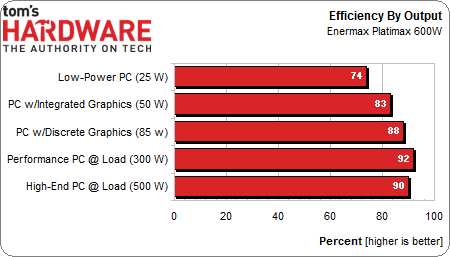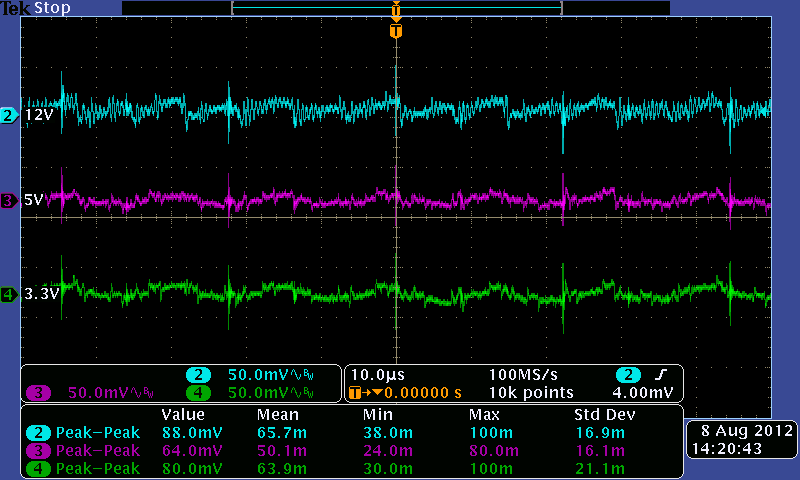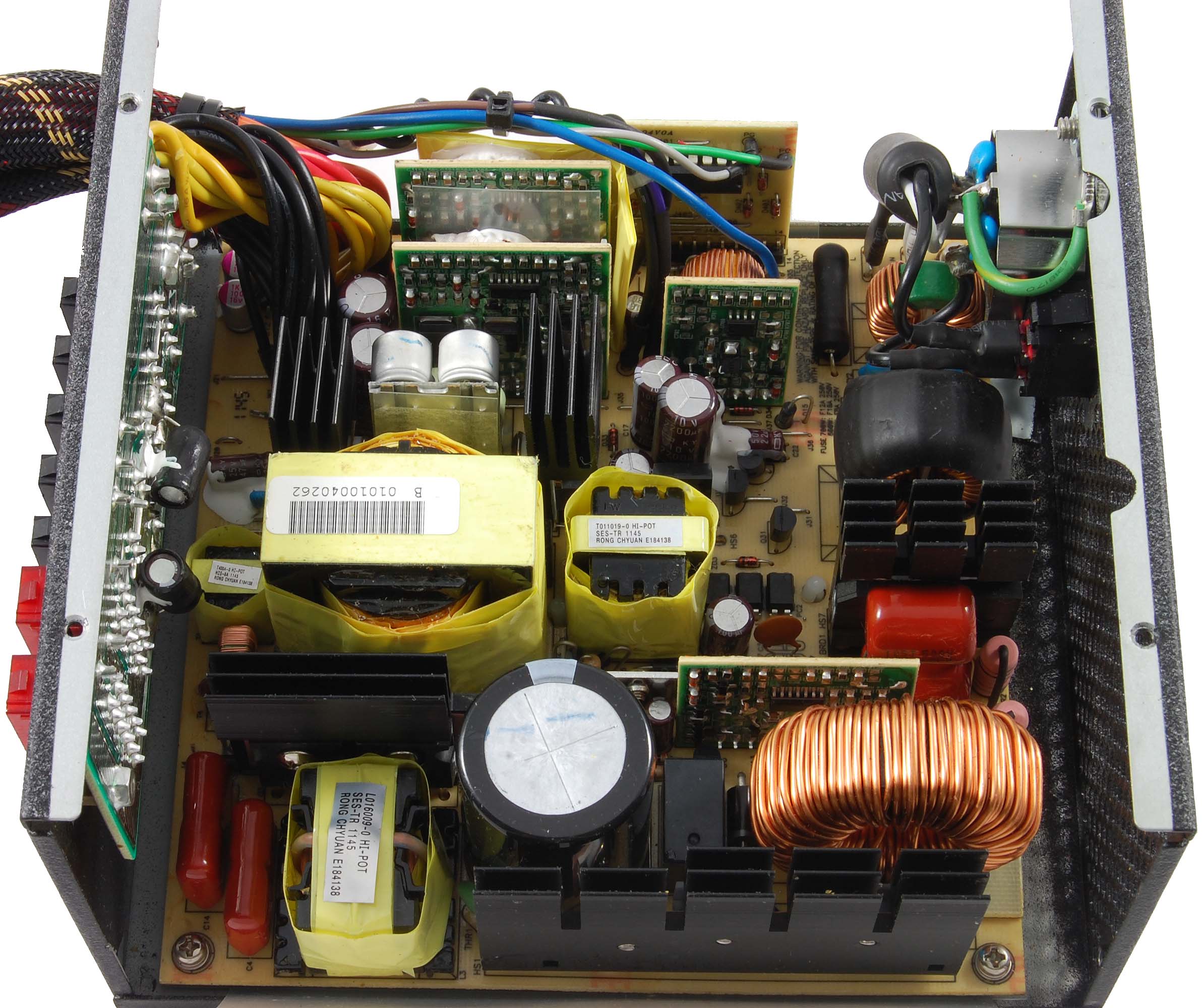Five 550 And 600 W 80 PLUS Platinum Power Supplies, Tested
A good power supply doesn't just provide you with ample output. Increasingly, vendors have put a bigger emphasis on delivering power more efficiently, too. We're testing five 80 PLUS Platinum-rated power supplies in the 550- to 600-watt range.
Results: Enermax Platimax 600 W
Efficiency According to the 80 PLUS Specification
Efficiency by Output Power
In our labs, the Platimax 600 W yields 80 PLUS measurements that are spot-on with the Platinum spec’s minimum values. At very low loads, however, efficiency begins to suffer. At a mere 25 W load, the Platimax is down to 74 percent efficiency, increasing to just 83 percent at 50 W.
At just a tad over 16 ms, the hold-up time barely exceeds the minimum stated in the ATX specification. While the other values are in compliance as well, the ripple and noise measurements warrant a closer look. On the three most important DC rails, we see voltage spikes, which are a few nanoseconds long, and exceed the allowable maximums on the 3.3 V rail. However, there can be multiple reasons for this phenomenon, and since the voltages are otherwise very clean, we’re not going to call a foul here.
A Closer Look at the PCB
A peek at the interior shows that the power supply is based on the so-called Dynamic Hybrid Transformer Topology. It is similar to LLC resonant toplogy used in expensive, high-efficiency power supplies. Since the Enermax supply is also highly efficient, it is not surprising that a similar architecture is being implemented.
The input filter design is somewhat unusual, as there are four Y capacitors, but no X capacitors. However, two X capacitors are found behind the bridge rectifier, so everything is copacetic after all. The soldering and general mechanical quality of this power supply are excellent, which comes as no surprise since Enermax uses high-quality components from Japan.
Get Tom's Hardware's best news and in-depth reviews, straight to your inbox.
Current page: Results: Enermax Platimax 600 W
Prev Page Enermax Platimax 600 W Next Page Kingwin Lazer Platinum 550 W-
mousseng Is that a typo in the first chart for Kingwin's Lazer? It claims that it fails 80 Plus's 50% load spec (82% of 92%); I assume that was meant to say 92% (since that's what the chart below it shows).Reply
Pleasant read, though, I like PSU reviews. -
What happen to Seasonic? They have the 520W fanless SS-520FL Platinum version. No PSU test is complete without a seasonic to compare to, in my own opinion.Reply
-
dudewitbow jupiter optimus maximusWhat happen to Seasonic? They have the 520W fanless SS-520FL Platinum version. No PSU test is complete without a seasonic to compare to, in my own opinion.they asked for vendors for the PSUs. Theres the offshoot chance that seasonic declined the offer. On other sites, the 520w fanless seasonic unit was compared to Rosewill's 500w silent night unit. The seasonic unit I believe in that review barely edged out a victory.Reply -
cangelini iknowhowtofixitEither the Rosewill FORTRESS was defective or your calibration was off for the last test. Your o-scope shots do not match those of other highly credible reviewers. Also, I'm curious of your testing methodology, but it was not listed.I believe this is still applicable to all of the power supply testing our German team does: http://www.tomshardware.com/reviews/psu-test-equipment,2657.html. I'm waiting for confirmation that I'm right.Reply
Edit: Yup, that's the correct testing equipment/procedure! -
Dun dun dun..................... no acoustic performance measured, the only reason some people buy high end PSU's.Reply
-
sebbesapa WOW! Thanks a bunch for including the 25watt "Low-Power PC" efficiency test! All other reviewers stop @ 20% load witch is not "idle" or "low load" at all. :-)Reply -
jaideep1337 I don't understandReply
Why is the 80 plus spec officially test by having more load on the 3.3v and 5v rails?
Clearly loading the 12v rail would give us a better overall image -
jaquith Interesting, IMHO the most important aspect is 'Ripple Voltage' @ Rated Load. The only mention I see is a vague reference in your conclusion page.Reply
Never mind I see the ripple data buried in the individual tests. It would have been better in the summary side-by-side tests.
Nice article.



